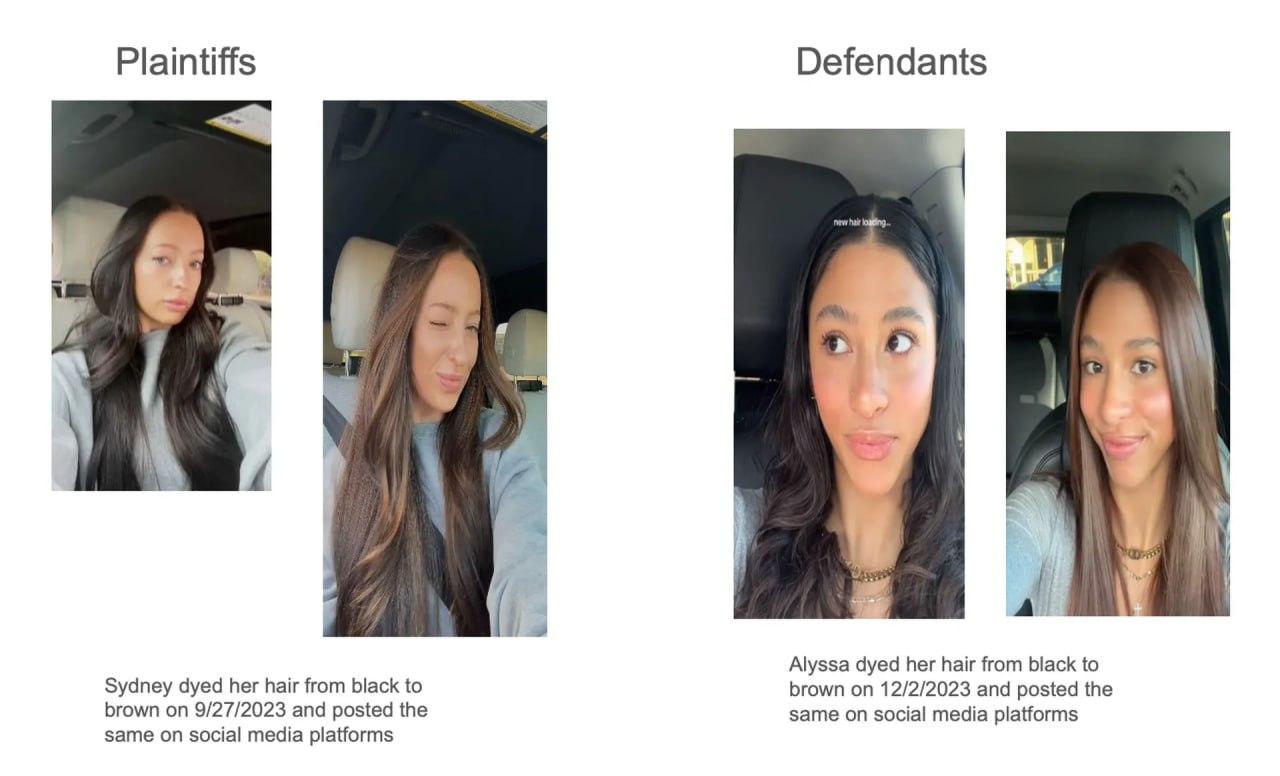In a case that’s as beige as it sounds, influencer Sydney Nicole Gifford has filed a lawsuit against fellow content creator Alyssa Sheil, accusing her of plagiarizing her “neutral, beige, and cream aesthetic.” The legal battle, dubbed the “sad beige lawsuit,” has sparked a heated debate: can you copyright a vibe, especially one as generic as minimalist beige?
This first-of-its-kind case could set a precedent that reshapes the influencer industry, raising questions about creativity, intellectual property, and the algorithmic forces that drive online sameness.
The Beige Backstory
Sydney Nicole Gifford, a 24-year-old Minneapolis-based TikTok and Instagram star with over 790,000 followers, built her brand on the “clean girl” aesthetic — think monochrome cream sweaters, minimalist home decor, and curated Amazon product recommendations. Alyssa Sheil, a 21-year-old from Austin, Texas, with nearly half a million followers, operates in the same niche.
Both influencers promote Amazon products through their storefronts, earning commissions via the Amazon Influencer Program. Their content is strikingly similar: beige cable-knit lounge sets, neutral-toned coffee tables, and mirror selfies with identical poses. Even their homes are devoid of color, furnished in shades of white, cream, and black.
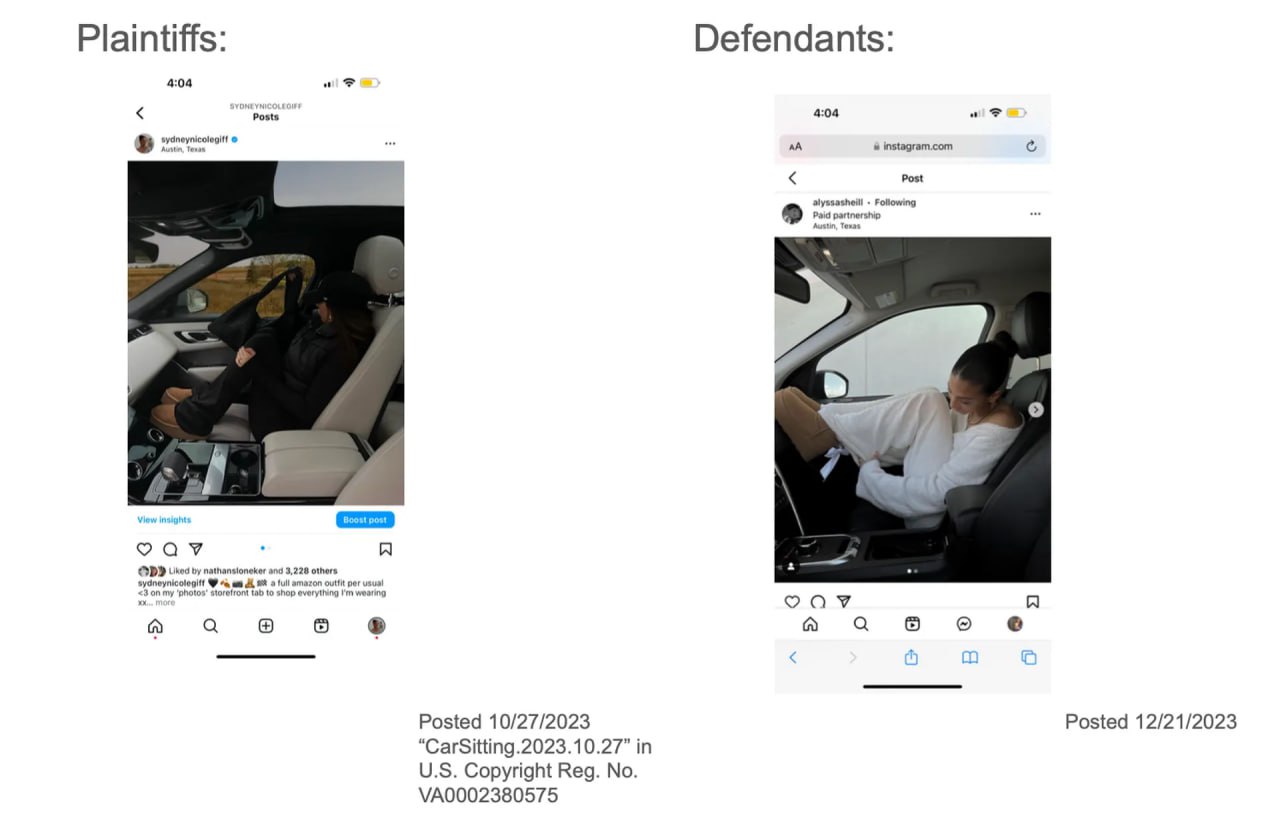
The drama began when Gifford and Sheil met in Austin in late 2022 to discuss a potential collaboration. After a joint photoshoot in January 2023, Sheil blocked Gifford on social media. Soon after, Gifford’s followers noticed that Sheil’s posts started mirroring Gifford’s— down to the products, captions, and camera angles.
Gifford alleges that Sheil’s mimicry caused her “mental anguish” and lost income, prompting a federal lawsuit in Texas in April 2024. She’s seeking up to $150,000 in damages and an injunction to remove Sheil’s allegedly copied content.
The “Clean Girl” Conundrum
At the heart of the lawsuit is the “clean girl” aesthetic, a trend that exploded around 2022 and remains algorithm-friendly for its photogenic simplicity. Characterized by oversized sweatsuits, minimal makeup, and neutral-toned decor, it’s championed by figures like Hailey Bieber and Sofia Richie Grainge.
But as Sheil’s attorneys argue, this aesthetic is far from original. “There are hundreds of people with the exact same aesthetic,” Sheil told The Verge. A quick scroll through TikTok reveals 620,000 posts tagged #cleangirl and 190,000 tagged #minimalism, proving the look’s ubiquity.
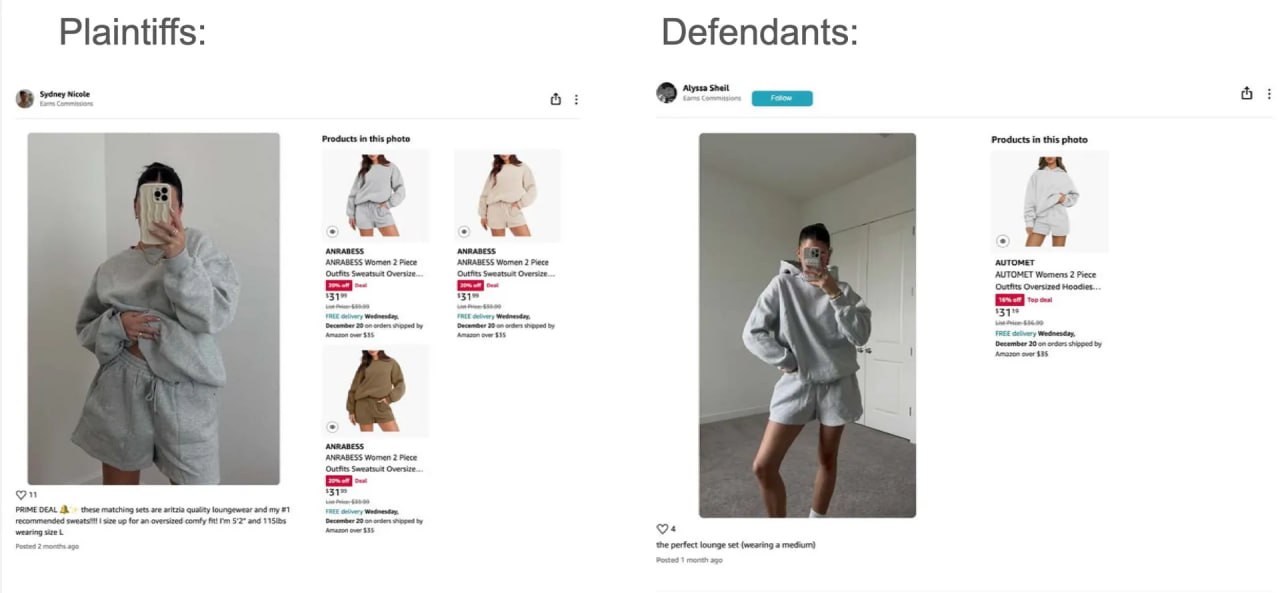
Gifford’s complaint avoids the term “clean girl,” likely because it undermines her claim to originality. Instead, she asserts copyright infringement, trade dress infringement, misappropriation of likeness, and Digital Millennium Copyright Act (DMCA) violations. She’s registered 140 photos and 18 videos with the U.S. Copyright Office, claiming Sheil replicated specific elements like poses, styling, and product choices.
For example, both influencers posted photos wearing the same cream cable-knit set, posing with their right knee bent, iPhones covering their faces. They even share identical home decor items, from fake olive trees to hallway storage stools.
Also read:
- TikTok Star Responds to Barry Keoghan Cheating Rumors Following Actor's Detailed Statement
- Hawk Tuah Girl’s Dating Revolution: Baldness Predictions and AI-Powered Flirting
Can You Copyright a Vibe?
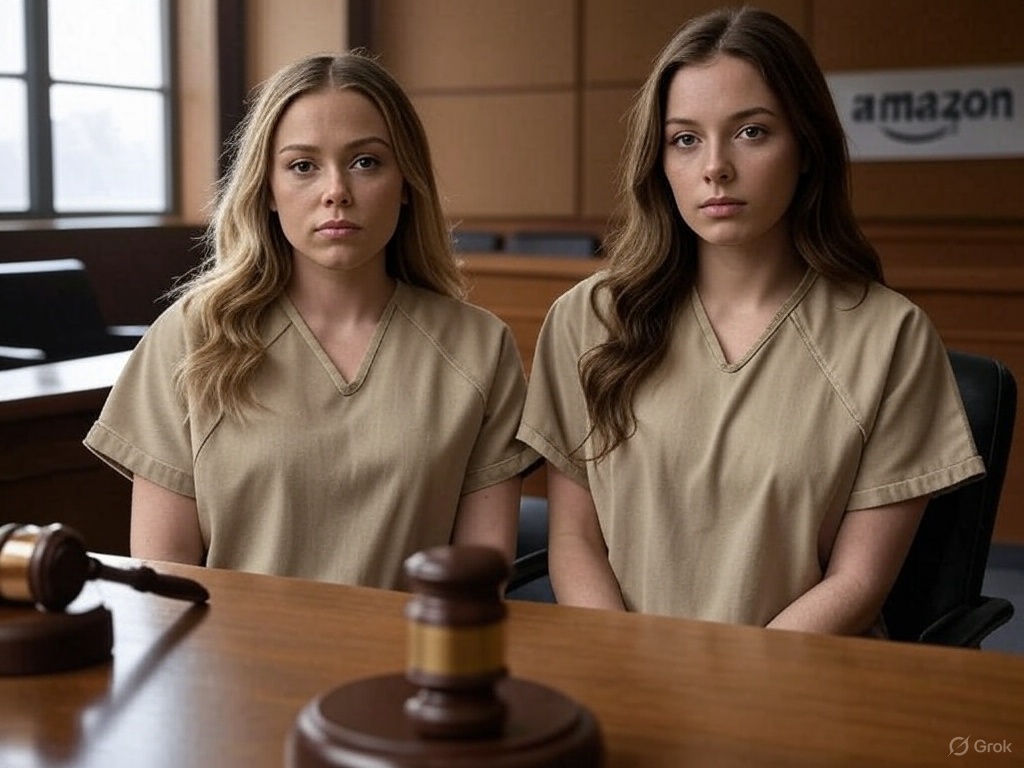 Legally, Gifford’s case is an uphill battle. Copyright law protects specific expressions, not ideas or styles. A beige sweater or a minimalist backdrop isn’t copyrightable, and courts have historically been skeptical of broad aesthetic claims.
Legally, Gifford’s case is an uphill battle. Copyright law protects specific expressions, not ideas or styles. A beige sweater or a minimalist backdrop isn’t copyrightable, and courts have historically been skeptical of broad aesthetic claims.
Trade dress, which Gifford also invokes, typically applies to tangible products or packaging — like a Coca-Cola bottle — not an influencer’s “vibe.” To succeed, Gifford must prove her aesthetic is distinctive and that Sheil’s content causes consumer confusion.
Yet, as intellectual property lawyers note, the clean girl aesthetic is so widespread that attributing originality to Gifford is dubious.
The court’s November 2024 ruling allowed Gifford’s copyright, trade dress, DMCA, and misappropriation claims to proceed, but dismissed others, like tortious interference.
Magistrate Judge Dustin Howell acknowledged the case’s novelty, noting it’s the first where an influencer accuses another of copyright infringement over similar promotional posts. However, legal experts like Michael Palmisciano argue that photos of the same product, styled similarly, may not infringe if they merely copy an idea rather than a specific expression.
The Algorithmic Elephant in the Room
The lawsuit also exposes how the Amazon Influencer Program and social media algorithms incentivize sameness. Amazon’s program encourages influencers to promote similar products, often sending identical items to creators with overlapping audiences.
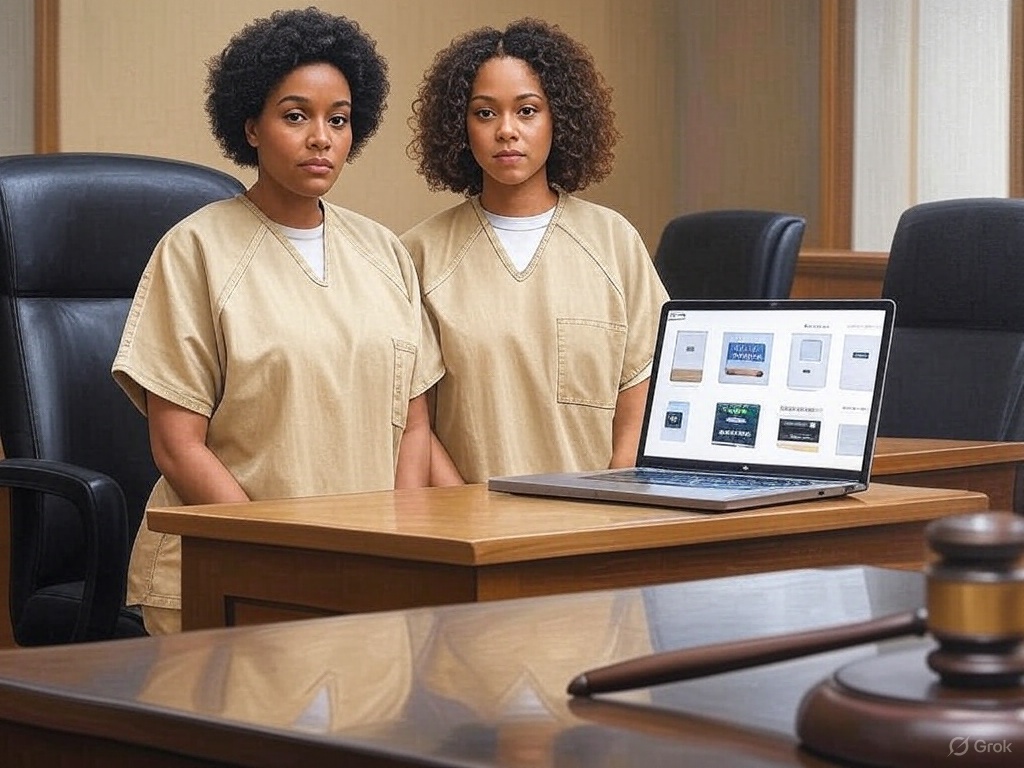 Brands target influencers like Gifford and Sheil — whose followers share demographic traits — because their beige, cohesive aesthetic makes sponsored products pop. As one influencer-management executive told The Cut in 2022, neutrals are favored because they create visual contrast for advertisements.
Brands target influencers like Gifford and Sheil — whose followers share demographic traits — because their beige, cohesive aesthetic makes sponsored products pop. As one influencer-management executive told The Cut in 2022, neutrals are favored because they create visual contrast for advertisements.
Social media algorithms amplify this homogeneity. TikTok’s algorithm, for instance, recommends videos based on colors, shapes, and styling, meaning a user watching Gifford’s beige content might be served Sheil’s near-identical posts.
Gifford argues this exacerbates consumer confusion, but it also highlights a broader truth: algorithms reward replication. The “clean girl” aesthetic thrives because it’s safe, timeless, and clickable, leading to what critics call “aesthetic consolidation” or the “age of average.”
The Stakes for Influencers
If Gifford wins, the implications could be seismic. A ruling in her favor might allow influencers to claim ownership over color schemes, poses, or even vibes, potentially stifling creativity and flooding courts with copycat lawsuits.
Bloomberg Law warned that such a precedent could enable influencers to “wield IP rights to control certain markets on social media platforms.” Conversely, a loss for Gifford could reinforce that aesthetics are fair game, leaving influencers vulnerable to imitation without legal recourse.
Sheil’s defense hinges on the argument that no one owns beige. Her attorneys cite cultural touchstones like Chip and Joanna Gaines and Kim Kardashian’s “minimal monastery” to underscore the aesthetic’s mainstream appeal. They also note that Sheil, a Black-Latina influencer, was already successful in the space before meeting Gifford, suggesting the lawsuit stems from jealousy rather than infringement.
Also read:
The Streaming Industry’s Strategic Pivot: Profit Over Subscriptions
The Bigger Picture
The “sad beige lawsuit” is less about who owns beige and more about the influencer economy’s fragility. Influencers like Gifford and Sheil invest hours curating content, but their livelihoods depend on platforms and algorithms that incentivize uniformity. As Vogue’s Emma Specter noted, influencers face a “pervasive cultural stigma” that dismisses their labor as vapid, leaving them unprotected against exploitation or imitation.
This case also reflects a broader cultural malaise. The clean girl aesthetic, with its sterile neutrals and aspirational sameness, mirrors a digital landscape where individuality is sacrificed for algorithmic approval. As The Guardian’s Arwa Mahdawi quipped, we’re in a “race to the basic bottom.” Whether Gifford or Sheil emerges victorious, the real winner might be the beige, bland status quo—and the algorithms that keep it spinning.
Sydney Nicole Gifford v. Alyssa Sheil is still unfolding, but one thing’s clear: in the battle of beige, the only color that matters is the gray area of the law.

